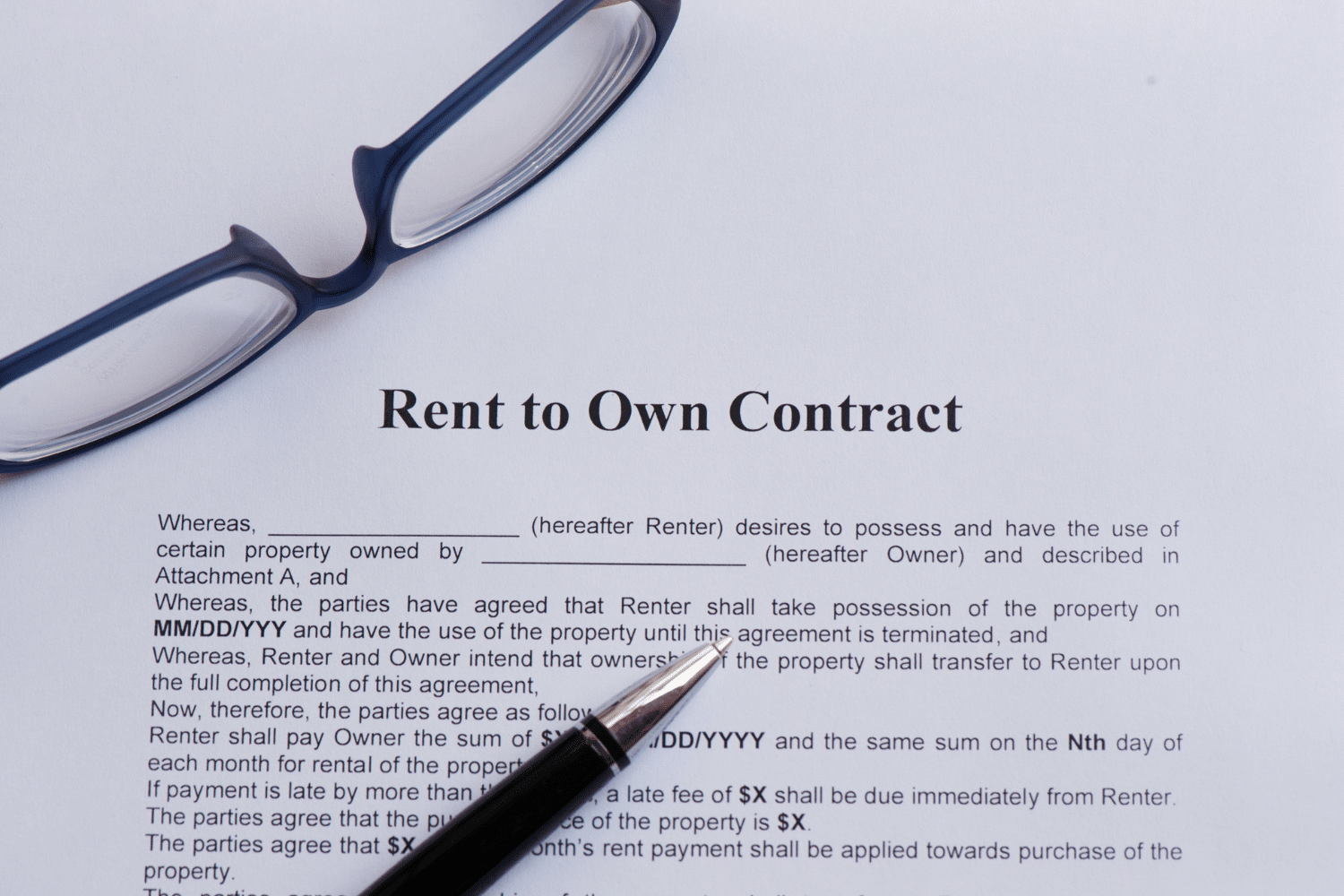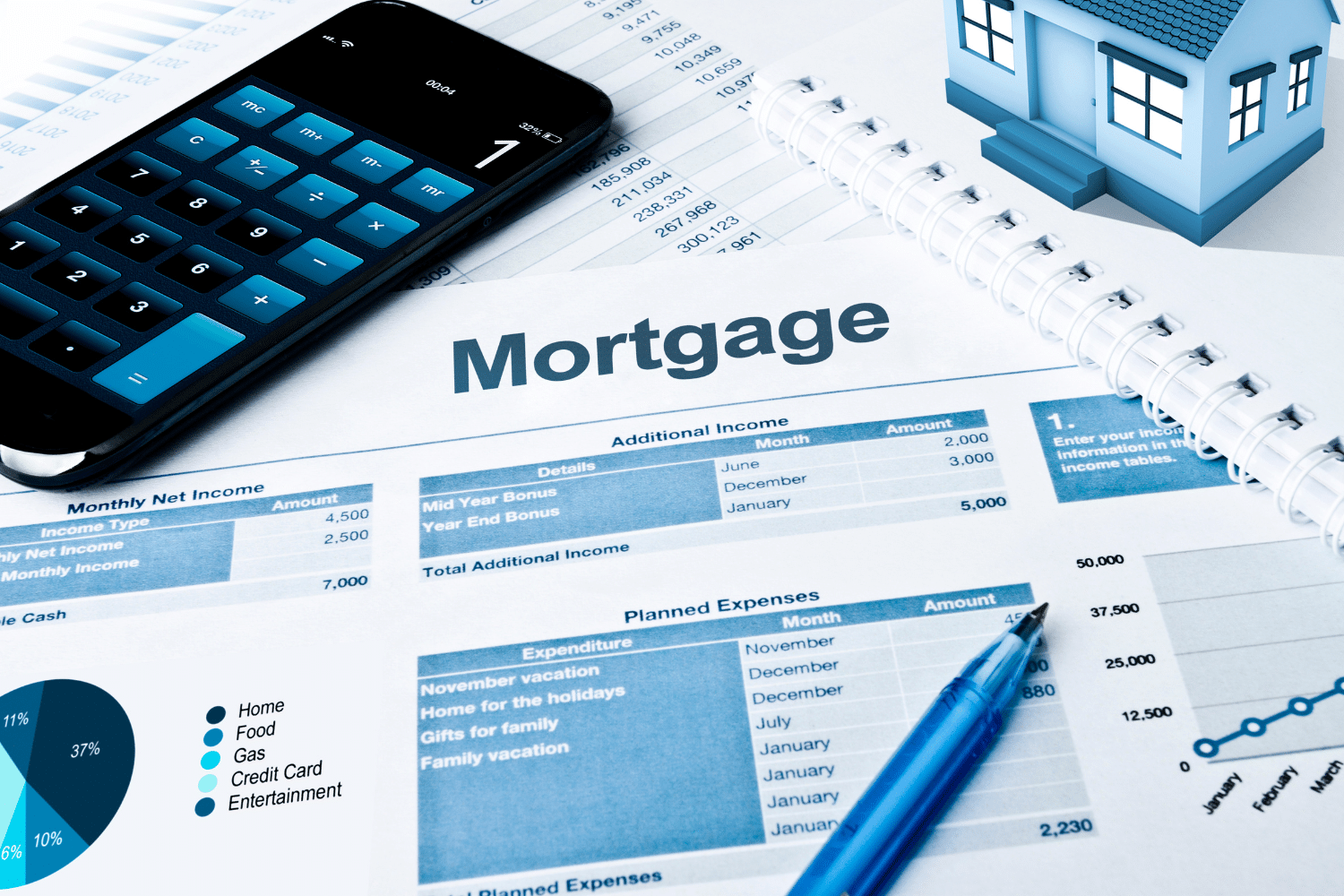When preparing to embark on a rent-to-own homeownership path, budgeting is critical. How do you plan for the upfront option fee and the typically higher monthly rents that contribute towards your future purchase? This article breaks down the essentials of budgeting for rent to own home, outlining the financial commitments required and offering strategies to handle them responsibly. Expect insights on saving for the initial costs, managing increased rent, and incorporating rent credits to build towards ownership—all tailored to put you on firm financial ground on your journey to buying your home.
Key Takeaways
- Rent-to-own agreements combine renting with the option to purchase the property, and require understanding the terms such as option fees, purchase price, and rent credits which contribute to the purchase.
- A strong budget plan for rent-to-own should anticipate upfront and ongoing costs, including higher rent and maintenance expenses, to ensure financial stability and readiness to buy at the end of the lease term.
- Securing financing for a rent-to-own home requires a good credit score and saving for the down payment, with the lease serving as a valuable period to improve creditworthiness and financial readiness for purchasing the home.
Understanding Rent to Own Agreements
A rent-to-own agreement is not your typical real estate transaction. It’s a creative solution that caters to those who are not yet ready to purchase a home outright. Picture this: you’re renting a home, but with each monthly payment, you’re inching closer to owning the walls that surround you and the roof that shelters you. This is the essence of a rent-to-own agreement, a hybrid model that marries the flexibility of renting with the long-term goal of ownership. With rent to own homes, you can achieve the dream of homeownership at your own pace through a rent to own program.
In these lease purchase agreement negotiations, you’ll encounter terms like the purchase option, the length of the lease, and the almighty purchase price—all pivotal in shaping your future as a homeowner. The conversation between buyer and seller sets the stage, with negotiations shaping the predetermined purchase price or deciding it when the lease expires, influenced by an upfront option fee and portions of your rent that may contribute to the purchase price. It’s a financial puzzle where every piece must fit perfectly to complete the picture of your future home.
Understanding the structure of a rent-to-own agreement is crucial. It’s not just about having a roof over your head; it’s about laying a solid foundation for the future. As we delve into the financial terms and types of agreements, keep in mind that knowledge is the key to unlocking the door to a successful rent-to-own experience.
Deciphering the Agreement’s Financial Terms

In the world of rent-to-own, the option fee is your golden ticket. It’s a nonrefundable sum, usually between 1% and 5% of the home’s purchase price, that grants you the exclusive right to buy the property before your lease says goodbye. But remember, this fee is not a loose change found under the couch cushions; it’s a serious commitment that requires diligent saving and budgeting.
Then there’s the monthly rent, a figure that often carries more weight in a rent-to-own scenario. A slice of this payment is set aside as a rent credit, a financial pat on the back that goes toward your future down payment or slices off a piece of the purchase price. This mechanism turns your regular rent into a savings plan, inching you closer to homeownership with each payment.
Lastly, we have the home’s purchase price itself, which can be a number set in stone at the lease’s inception or a figure that takes shape as the lease concludes. This number is the summit of your rent-to-own climb, the eventual value of your home that dictates the mortgage mountain you’ll need to conquer. Deciphering these financial terms isn’t just about understanding the numbers; it’s about seeing how they fit into your larger financial landscape.
Lease Option vs. Lease Purchase
When you stand at the fork in the road of rent-to-own paths, you’ll find two signs: Lease Option and Lease Purchase. The lease-option contract is like a dinner invitation with no obligation to attend the party; it gives you the right—but not the duty—to buy the home once the lease waves goodbye. It’s a safety net that catches you if life throws a curveball, allowing you to walk away without legal repercussions.
Then there’s the lease-purchase contract, which is like RSVPing ‘yes’ to the dinner party. It legally binds you to purchase the home at the lease’s curtain call. This path requires more certainty in your financial readiness, as you’re making a promise to the seller and to yourself that you’ll be ready to take on the responsibility of ownership, come what may.
Choosing between a lease-option and a lease-purchase is more than a mere financial decision; it’s a reflection of your confidence in your future financial stability. It’s about assessing your readiness to transition from a renter to an owner and understanding the depth of commitment each path entails.
Planning Your Budget for a Rent to Own Home

Embarking on a rent-to-own journey requires a budget that’s as sturdy as the foundation of the home you’re aiming to buy. It’s not just the monthly rent that needs your attention; it’s the initial fees, the higher rent premiums, and the other costs that lurk around the corner. Crafting a budget for a rent-to-own home is like preparing for a marathon; you need to pace yourself, plan for the long run, and make sure you’ve got enough in the tank to reach the finish line.
Budgeting tools are your best friends here. Whether it’s a trusty spreadsheet or a sleek app that syncs with your bank account, choose a method that mirrors your financial habits and lifestyle. These tools not only help you keep track of your spending but also enable you to adjust your plan as your journey unfolds. Remember, a budget that works for one person may not suit another, so tailor yours to fit your unique financial blueprint.
As you prepare to navigate the financial terrain of a rent-to-own deal, remember that foresight and preparation are your allies. Anticipating the upfront and ongoing costs will ensure you’re not blindsided on your path to homeownership. With a well-planned budget, you’ll have the confidence to stride toward your dream home with financial clarity and control.
Allocating Funds for Initial Fees
Before you set foot in your potential new home, there’s the matter of the option fee—a critical piece of the rent-to-own puzzle. This fee is the key that unlocks your exclusive right to purchase the property at the end of the lease. It’s a nonrefundable commitment, typically ranging from 1% to 5% of the purchase price, and in some cases, even as high as 7%. This upfront investment is a bold statement of your intention to buy and a crucial step in the rent-to-own process.
Saving for this fee is not an overnight endeavor; it demands discipline and foresight. You’ll need to scrutinize your finances, perhaps cutting back on discretionary spending or finding ways to increase your income. It’s a financial hurdle that, once cleared, brings you closer to the goal of homeownership. Consider this fee as the first of many investments in your future home.
While the option fee may seem daunting, it’s a fundamental part of your entry into a rent-to-own agreement. Budgeting for this cost from the outset will prevent any surprises and ensure a smooth start to your home-buying journey. It is the first of many steps in building the financial framework for your future home.
Anticipating Higher Monthly Rent

Stepping into a rent-to-own home often means agreeing to a higher monthly rent compared to typical leasing arrangements. But it’s not just an added expense; it’s an investment in your future. A portion of that rent is designated as a rent credit, a stepping stone that brings you closer to reducing the purchase price or bulking up your down payment. Think of it as a piggy bank that grows with each rent check you write, a piggy bank that’s paving your way to homeownership.
The elevated rent is a trade-off, offering you the chance to accumulate equity in a home before you even own it. It’s an arrangement that requires careful budgeting, as you’ll need to manage the higher monthly costs while still covering your other living expenses. But those who navigate this balance well find that the higher rent payments are not just a monthly bill but a strategic move toward a more secure financial future.
As you consider a rent-to-own agreement, remember that the higher rent is not a landlord’s ploy to squeeze more out of your wallet—it’s a mutually beneficial setup that serves your long-term interests. By anticipating and planning for this aspect of the agreement, you’ll ensure that every dollar you spend on rent is a dollar invested in a future where you hold the keys to your own home.
Preparing for Other Costs
Venturing into a rent-to-own arrangement isn’t just about the rent and option fee; it’s also about the myriad of other expenses that come with property ownership. As a tenant, you might find yourself responsible for:
- the upkeep of the property, from the mundane task of mowing the lawn to the more significant demands of repairing a leaky roof
- paying property taxes and insurance
- covering the cost of utilities
- maintaining appliances and systems in the home
- making any necessary repairs or renovations
These costs need to be woven into your budget tapestry, accounting for the unexpected and ensuring you’re never caught off guard.
In addition to routine maintenance, there are long-term costs to consider, such as property taxes and homeowners insurance, which may fall on your shoulders. These are not mere details but substantial financial commitments that impact your budget and your future as a homeowner. Understanding these obligations is crucial, as they can influence your decision to enter a rent-to-own agreement and shape the way you manage your finances throughout the rental period.
While these costs may seem like unwelcome guests at your budgeting table, they are, in fact, part of the homeownership experience. Embracing them early on ensures you’re fully prepared for the financial realities of owning a home. By accounting for these costs in your planning, you’re not just budgeting for a place to live—you’re budgeting for a life in your own home.
Evaluating the Rent to Own Plan Against Your Long-Term Financial Goals
Deciding whether a rent-to-own home aligns with your long-term financial aspirations is like charting a course for a voyage. It requires an honest assessment of the total costs and a deep understanding of your financial horizon. Will the rent-to-own ship steer you towards the shores of financial stability, or will it lead you into the treacherous waters of unmanageable debt?
Consider the finer points of the agreement, like who bears the brunt of maintenance and repair duties. These details can have a significant impact on your budget and should be weighed against your goals of building wealth and securing your financial future. Furthermore, understanding the consequences of missed or late payments can prevent your rent-to-own dream from turning into a financial nightmare.
Consulting with a real estate attorney is like recruiting a seasoned navigator for your voyage. They can provide clarity on the financial implications and legalities of a rent-to-own agreement, ensuring that your plan is not only viable but also advantageous.
An informed evaluation of the rent-to-own plan against your long-term financial goals will determine whether this route is the most conducive to achieving the dream of homeownership.
Steps to Secure Financing at the End of the Lease Term
As the end of the lease term approaches, securing financing becomes the final hurdle in the rent-to-own race. It’s a critical phase where maintaining a good credit score takes center stage, as it is pivotal for mortgage qualification. Just as a runner prepares for the last leg of the marathon, you must ensure that your financial affairs are in order to cross the finish line into homeownership.
This is the time to take stock of your credit health. Regularly reviewing your credit report for any discrepancies and rectifying errors can give your credit score the boost it needs to shine in the eyes of mortgage lenders. And as the importance of a solid down payment cannot be overstated, saving strategies become essential during this period. Every dollar saved is a step closer to the down payment that will anchor your mortgage and secure your home.
Failing to qualify for a mortgage at the end of the rent-to-own lease could mean waving goodbye to the option to buy the home, along with all the rent credits you’ve accumulated. Therefore, it’s crucial to understand the mortgage requirements early and work diligently towards meeting them. Securing financing is not just about getting a loan; it’s about fulfilling the promise of the rent-to-own agreement and finally owning the home you’ve grown to love.
Building or Repairing Credit

Navigating the rent-to-own waters grants you the valuable time needed to shore up your creditworthiness before the ultimate commitment of a mortgage application. Consider this period as an opportunity to recover from financial missteps or unforeseen bills that may have previously capsized your credit score. It’s a chance to chart a course towards a healthier financial future, where a strong credit score is the beacon guiding mortgage lenders to your port.
Improving one’s credit score involves:
- Reducing debt, particularly high-interest credit card debt
- Ensuring that all bills are paid promptly
- Utilizing a rapid rescore process offered by certain lenders to swiftly increase your credit score, especially if minor errors are dragging down your score or if you’ve recently paid off a significant amount of debt.
A robust credit score opens the door to not only securing a mortgage but also unlocking more favorable interest rates, which can save you thousands over the life of a loan. Your credit score is a reflection of your financial past, but with the right actions, it can also be the foundation for a prosperous homeownership future. As you lay each brick on the road to a better credit score, you’re building the foundation for a stable and successful purchase of your rent-to-own home.
Saving Strategies for the Down Payment

When it comes to the down payment on your future home, think of it as the anchor that stabilizes your mortgage; the more substantial it is, the less tumultuous your financial seas will be. Strategic saving is the wind in your sails here, and every gust that fills them brings you closer to your goal. Harnessing tax refunds, for example, can provide a significant boost to your down payment savings without having to adjust your daily budget.
Creating a designated savings account for your down payment is like having a treasure chest dedicated to your home purchase. It’s a way to ensure that your hard-earned money is safeguarded for its intended purpose, rather than being swept away by the tide of daily expenses. Cutting back on non-essential spending is another effective strategy; it’s like trimming the sails of your financial ship to make it more streamlined and focused on the journey ahead.
For those who wish to accelerate their savings, additional income streams can be a powerful current pushing you towards your destination. Whether it’s taking on a part-time job, freelancing, or selling items you no longer need, these extra funds can make a significant difference in your down payment fund. By employing a combination of these saving strategies, you’re not just collecting coins; you’re building a financial fortress that will protect and empower you as you take ownership of your rent-to-own home.
The Role of a Real Estate Attorney in Budgeting for Rent to Own
In the voyage of rent-to-own, a real estate attorney is like the seasoned captain who can navigate the complex legal waters and ensure a safe journey. Their expertise is invaluable in helping you understand your legal responsibilities and financial obligations within the rent-to-own agreement. With their guidance, you can anticipate and budget for additional costs like homeowner association fees, property taxes, and insurance, which may not be immediately apparent.
A real estate attorney can:
- Dissect the finer points of your rent-to-own contract, ensuring that you’re not blindsided by any hidden reefs that could jeopardize your financial ship
- Clarify maintenance responsibilities
- Delineate property tax implications
- Help you understand insurance requirements
By doing so, they add a layer of protection to your budget, allowing you to forecast expenses accurately and avoid unexpected financial storms.
Engaging a real estate attorney may seem like an added cost, but it is an investment in peace of mind and financial security. It’s akin to having a lighthouse guiding you through the fog of complex legal and financial documents. With their expertise illuminating the path, you can confidently navigate the rent-to-own process, secure in the knowledge that your budget is sound and your financial goals are within reach.
Comparing Rent to Own with Other Home Purchase Options
When charting your course to homeownership, it’s essential to survey the landscape and compare the rent-to-own route with other pathways. While each option has its unique terrain, understanding the financial implications of rent-to-own agreements is crucial to making an informed decision that aligns with your goals. Unlike traditional mortgages, which often require a sizable down payment and upfront financing, rent-to-own agreements can offer a more gradual ascent to home ownership.
Rent-to-own contracts, typically lasting one to three years, provide a shorter-term commitment with a purchase price locked in at the agreement’s onset. This can be particularly advantageous in a rising housing market, where prices may climb over time. However, it’s important to consider that rent-to-own might come with a higher overall cost compared to traditional home buying, making it essential to calculate the financial benefits carefully.
As you weigh the pros and cons, remember to seek the best mortgage rates available, whether through rent-to-own or traditional home purchase. Comparing these rates is a critical step in ensuring that you’re getting the most financial bang for your buck. By thoroughly examining all options, you can make a choice that not only suits your current financial situation but also sets you on the most favorable path toward the ultimate goal of homeownership.
Crafting a Personalized Rent to Own Budget Plan
Creating a personalized rent-to-own budget plan is like drawing your own treasure map; it must be customized to your financial situation and goals. The rent you pay in a rent-to-own agreement is not just a monthly expense; it’s part of a structured saving strategy through rent credits, which enforces discipline in accumulating funds for the down payment. This means higher overall monthly payments, but also a clear path towards owning the home.
Your budget plan should take into account all facets of the rent-to-own process, from the initial option fee to the anticipated higher monthly rent and any additional costs like maintenance and repairs. It’s about striking a balance between your current financial capabilities and your aspirations for homeownership. By considering these elements, you’re not only preparing for the routine costs of renting but also proactively working towards the future purchase of the property.
Having a detailed and personalized budget plan is the compass that will keep you oriented towards your financial goals throughout the rent-to-own journey. It will help you:
- Avoid common pitfalls
- Ensure that each rent payment is a strategic step towards your dream of home ownership
- Confidently navigate the complexities of the rent-to-own process
- Make your vision of owning a home a reality
With a well-crafted plan in hand, you can confidently navigate the complexities of the rent-to-own process and make your vision of owning a home a reality through rent to own work.
Tips for Negotiating Favorable Rent to Own Deals

Negotiating a rent-to-own agreement is like haggling in a marketplace; it requires research, due diligence, and a clear understanding of what you want to achieve. To secure a deal that aligns with your financial objectives, begin by researching property prices in the area and scrutinizing the details of your contract. This will help ensure that your monthly payments are in line with market values and that you’re not overextending your budget.
Securing favorable rent credits is essential to the negotiation process. These credits are the portion of your rent that will go towards the purchase price of the home, so the higher the credits, the less you’ll need to finance when it’s time to buy. It’s a delicate dance between what you can afford and what the seller is willing to offer, but with skillful negotiation, you can set the stage for a successful transition to homeownership.
Remember, the art of negotiation is not just about getting a lower price; it’s about crafting a deal that serves your long-term interests. It’s about ensuring that each element of the rent-to-own agreement—from the monthly rent to the purchase price and the rent credits—puts you in a position to succeed when the lease ends. With these tips in hand, you’re ready to negotiate a rent-to-own deal that not only fits your budget but also brings you closer to the dream of owning your own home.
Summary
As we reach the end of our journey through the world of rent-to-own homes, it’s clear that this path offers a unique opportunity for prospective homeowners. From understanding the intricate details of rent-to-own agreements to crafting a comprehensive budget plan and negotiating favorable terms, each step brings you closer to the threshold of your own home. The key is to approach this journey with diligence, foresight, and a willingness to adapt your strategy as needed.
Your adventure in rent-to-own is not just about paying rent—it’s about building towards something greater. It’s a process that allows you to grow your financial roots in a property before fully committing to its purchase. And with each rent payment that contributes to your down payment, you’re not just a tenant; you’re an investor in your future.
Let this guide be the map that leads you through the rent-to-own process, from the initial stages of understanding agreements and budgeting to the final steps of securing financing and negotiating your deal. With the right planning and guidance, you can navigate this path successfully and unlock the door to homeownership. The dream is within reach, and the keys to making it a reality are in your hands.
Frequently Asked Questions
It’s generally more financially advantageous to own a home in the long run, despite higher initial costs. Renting involves ongoing monthly payments, while a mortgage has the potential to be more cost-effective over time.
Rent-to-own agreements typically do not impact your credit score as they are not reported to credit bureaus. However, you may be able to request that your payments be reported to the bureau to potentially help build your credit.
A rent-to-own agreement is a unique contract that combines aspects of leasing and buying a home, allowing you to rent the property for a set period with the option or obligation to purchase the home before or at the end of the lease term.
The option fee in a rent-to-own agreement is an upfront payment that grants you the right to buy the property at the end of the lease. It’s nonrefundable, usually 1% to 5% of the home’s purchase price, and can be used towards the down payment if you choose to purchase the home.
Yes, in a rent-to-own agreement, monthly rent payments can be higher due to a portion of the payment being set aside as rent credits, which contribute towards the down payment or purchase price of the home.




